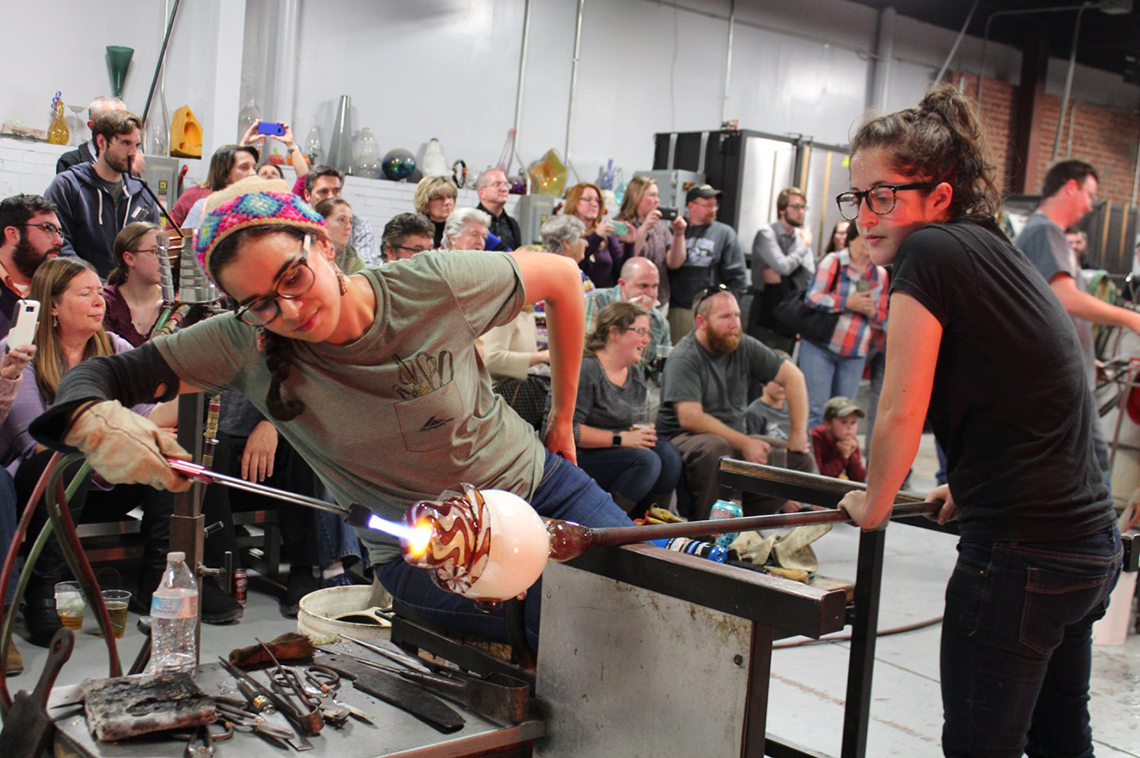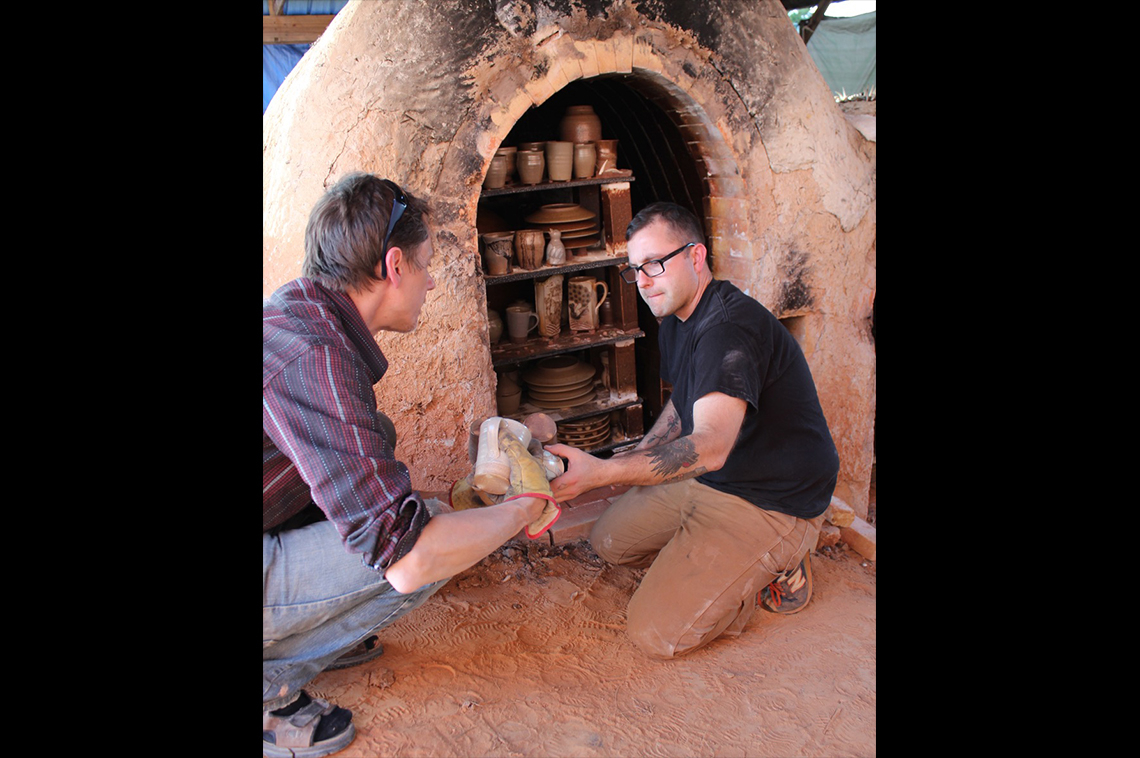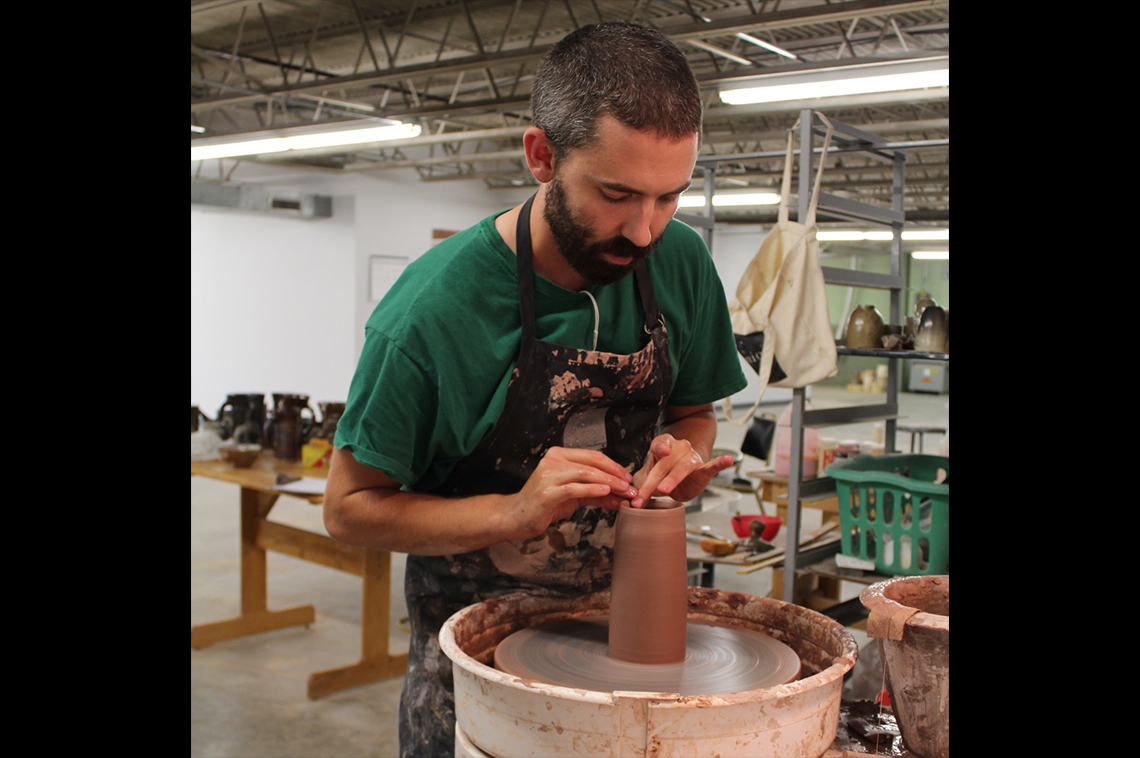


The small rural town of Star, located in the center of North Carolina, was once a thriving mill town. The Russell Hosiery Factory, which opened around 1900, employed 1,000 people in a community of 800 residents. Although North Carolina’s urban areas have experienced exhilarating growth in industries such as information technology and finance, rural communities that were once reliant on furniture, tobacco and textiles have experienced an economic downturn.
Community leaders came together to formulate a plan for a “massive economic restructuring” that could drive the local economy. Central Park NC formed in 1993 to harness the regions’ natural and cultural resources and help locally owned businesses thrive. In 2005, Central Park NC began the STARWorks Center for Creative Enterprise with 2.5 staff. Its mission is to grow a new rural economy and to promote artists and their skills. Soon thereafter, STARWorks was offered a 180,000 square ft. (4 acre) factory campus—with the caveat that it had to be used for the betterment of Star. Though the staff had no money and no experience running such a large facility, they accepted. Currently, StarWorks runs STARWorks Glass, a public access glass studio and rental space, STARWorks Ceramics, a vertically integrated company specializing in wild clay, and STARWorks Clay Studio, a residency program. The facility is also home to equipment maker and consultancy firm Wet Dog Glass.
Since 2005, STARWorks has created nearly 60 jobs, with average wages of more than $10,000 above average local wages. Over a period of ten years, the team has created or attracted several businesses that still exist today. That’s major, considering that in today’s economic climate, the average life expectancy of a corporation is less than 10 years.
I had a chance to speak with STARWorks founder and executive director Nancy Gottovi, Ph.D., about the organization’s unique brand of workforce development.
How has STARworks and their partners re-envisioned manufacturing?
Nancy: We realized that artists were makers and manufacturers, and they come with design skills built in. Wet Dog Glass, a company at STARworks that makes glass equipment, furnaces, and other items, hires predominantly artists—people with BFAs and MFAs—right out of school. In addition to design skills, they have incredible material expertise. All of this informs the manufacturing process. The end result is beautifully crafted and designed equipment for the glass materials industry that includes not only university glass programs but also equipment for corporations like Corning and Boeing.
The market that you've developed around local clay is super interesting. Can you tell me more about it?
Nancy: We have a ceramic clay manufacturing business that is becoming a game changer in the studio pottery world. Part of our mission is to build a new economy based on the sustainable natural and cultural resources of the region, and so we started with the dirt under our feet!
North Carolina has some of the best-quality pottery clays in the world, but no one was manufacturing clay bodies from them. So we began to do that. Now our clay business is becoming the talk of the clay world. And it’s growing exponentially.
It helps that we are located near Seagrove, a very historic community that is home to several hundred potters. All of the other large clay companies source their materials from the same several mines across the United States: the mines of South Dakota, Ohio, or elsewhere. Their main customers are the global whitewares industry. Potters were a tiny piece of their market. When the whitewares industry, like a lot of manufacturing in the United States, moved off shore, those clay materials were no longer available to potters.
We became very interested in the idea of locally sourced materials. Over the decades, potters no longer wanted to dig their own clay for a lot of reasons. They started using commercially available clays. We wanted to get back to connecting artists with these incredibly wonderful, indigenous clays. There's a reason why this secret pottery community has been here for over 250 years! It's because of the material—it's because of the clay.
How does workforce training fit into your educational and community goals?
Nancy: We’ve been focusing more on the development of a local living economy. By that I mean that we want businesses in our community that are community stewards and value a healthy, vibrant community as part of their return on investment, rather than just a maximum profit return. So these are values that we try to instill in the fabric of every venture in which we engage. The wonderful thing about art is that art is business, but it also the practice of taking materials and using them to create objects that reflect our values and solve community problems.
Access to quality arts programs helps develop the critical thinking and problem solving skills that tomorrow’s community leaders will need. Therefore, we place a high priority on our educational programs, which include classes, workshops, field trips, and special independent studies for K-12 school children. Each year, our programs provide learning opportunities for more than 5,000 school children from the surrounding, mostly rural, counties of central North Carolina. Students experience the excitement, teamwork, and focus that are required to work with glass at 2100 degrees while also learning about the chemistry and physics of glass and ceramics and the history of glass and ceramic making.
What’s the importance of STARWork’s artist residencies?
Nancy: The visiting artists are usually internationally known and in very high demand. They engage the local community, but they also provide inspiration and motivation for mid-career resident artists looking to shake up their routine or to explore another avenue of work. Resident artists also inform some of our product design and provide a learning opportunity for interns, who are usually at the beginning of their career. We're not the only ones that do that. Speaking of whitewares, Kohler Industries is a big company that makes toilets, sinks, and bathroom fixtures and has one of the most successful artist residencies around. They invite ceramic artists to come to Kohler to use their facilities and industrial equipment. It's an amazing opportunity for artists, but at the same time, Kohler is able to get really interesting design ideas from artists.
Design is important to American manufacturing. It also tends to be very culturally specific and is less likely to be offshored. For us, bringing those two together made an awful lot of sense.

A blog series by Ebony Mckinney





